
How Much Is Plastering A Room
- Interior Design
- January 26, 2024
Plastering a room is a crucial step in creating a smooth, even surface for the walls and ceilings. It involves applying a layer of plaster over the existing surface to create a uniform finish. This process is essential for both aesthetic and functional purposes.
In this article, we will explore the different types of plastering, the cost of plastering a room, how to calculate the amount of plaster needed, the steps involved in plastering a room, and the time it takes to complete the process. Whether you’re considering a DIY project or hiring a professional, this comprehensive guide will provide you with the information you need to make an informed decision.
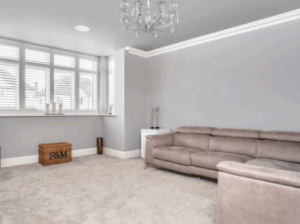
What Is Plastering?
Contents
Plastering is a common construction technique that involves applying a paste made of gypsum and lime to a surface using a trowel. This process helps create a smooth and polished finish on walls and ceilings.
The trowel is a crucial tool in this process, ensuring that the mixture is evenly spread and smoothed out. Plastering not only enhances the visual appeal of a surface but also improves its strength and durability, making it more resistant to wear, moisture, and other external factors.
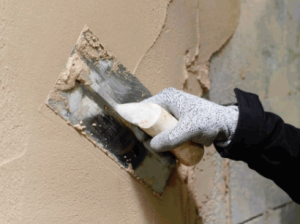
What Are The Different Types Of Plastering?
Plastering encompasses various techniques, including traditional plastering, dry lining, and skimming, each serving specific purposes in construction and renovation projects.
Traditional plastering involves the application of wet plaster directly onto surfaces. This offers a strong and durable finish, making it ideal for old or uneven walls.
Dry lining, on the other hand, utilizes plasterboard, providing a quicker and cleaner installation process. This makes it suitable for more modern constructions.
Skimming is a technique for achieving a smooth surface by applying a thin layer of plaster over existing walls or ceilings. It is perfect for achieving a flawless final surface.
Traditional Plastering
Traditional plastering involves the application of plaster directly onto the walls or ceilings, followed by trowel smoothing and finishing to create a seamless surface.
The process of traditional plastering typically begins with preparing the surface. This involves ensuring it is clean, free of debris, and properly moistened to allow the plaster to adhere effectively.
Once the surface is ready, a mixture of plaster is applied using a hawk and trowel in several coats. Each layer must dry before the next one can be applied. The final coat, also known as the finishing coat, is meticulously smoothed to achieve a uniform texture and appearance. This technique requires skill and precision to achieve a high-quality finish that is both durable and visually appealing.
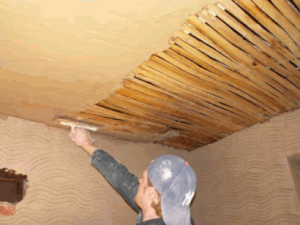
Dry Lining
Dry lining is a method where plasterboard is affixed to the walls or ceilings, providing a smooth surface for painting or wallpapering without the need for traditional wet plaster application.
This method is highly efficient as it can be quickly installed, reducing the overall construction time. It is a cost-effective solution, as plasterboard materials are generally less expensive than traditional wet plaster materials. The labor costs associated with dry lining are often lower due to the simplified application process.
The use of plasterboard also enhances insulation and soundproofing, further contributing to energy efficiency and acoustic control within buildings.

Skimming
Skimming involves the application of a thin finishing coat of plaster to create a smooth, uniform surface, ideal for enhancing the aesthetics of walls and ceilings.
This technique is commonly used to cover imperfections such as cracks, uneven textures, or old paint, providing a clean canvas for new decorative finishes.
Professional contractors often employ skimming to achieve flawless results, using specialized tools and expertise to ensure a seamless and professional finish. By applying the plaster in thin, even layers, and meticulously smoothing the surface, they can transform rough or damaged walls into a pristine, inviting backdrop for interior design.
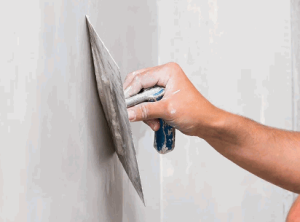
How Much Does Plastering A Room Cost?
The cost of plastering a room varies based on factors such as room size, surface preparation, labor, materials, and the complexity of the project. This makes it crucial to obtain accurate estimates from experienced contractors for budget planning.
Factors such as the condition of the walls, the need for additional structural repairs, and the type of finish desired can also impact the overall cost.
It’s important to carefully consider labor rates, material prices, and any potential changes to the project scope, as these can significantly affect the budget.
If the plastering is part of a larger renovation or home improvement project, it’s vital to account for the overall impact on the budget and timeline.
Seeking multiple quotes and considering the quality of work alongside the rates can lead to informed decision-making.
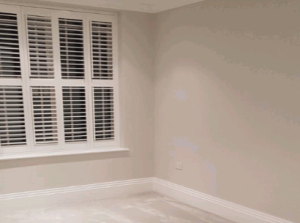
Factors That Affect The Cost Of Plastering
The cost of plastering a room is influenced by variables like square footage, surface condition, material selection, labor rates, and the need for additional repairs or enhancements as part of a renovation or home improvement project.
When it comes to plastering, the size of the room is a key factor in determining the cost. This is because larger spaces require more materials and labor hours, which can significantly impact the budget. Additionally, the type of materials used, whether it be traditional plaster or modern alternatives like drywall, can also affect the overall cost.
The scope of the renovation or home improvement project is another important consideration. If specialized finishes or intricate designs are required, this can add complexity to the plastering job and increase the budget. It’s important to carefully consider these factors when planning for a plastering project to ensure an accurate budget and successful outcome.
Average Cost Of Plastering A Room
The average cost of plastering a room typically ranges from $800 to $2000, depending on the size, complexity, and regional labor rates. It’s essential to obtain detailed quotes from professional contractors to accurately budget for the project.
Regional variations in labor costs can significantly impact the overall budget for plastering projects. For instance, urban areas may have higher average estimates due to increased demand and living expenses, while rural regions may offer more competitive rates.
Seeking quotes from experienced contractors in your specific locality can help in understanding the prevailing market rates and determining a suitable budget. Factors such as the condition of the existing walls and any necessary preparatory work can also influence the final cost of the plastering project.
How To Calculate The Amount Of Plaster Needed?
Calculating the amount of plaster needed involves measuring the area of the walls and ceilings, determining the desired thickness of the plaster, and using these factors to compute the total quantity required for the project.
Once the area is measured, the thickness of the plaster layer must be decided upon. This thickness directly impacts the amount of plaster needed.
The surface area of the walls and ceilings is then multiplied by the chosen thickness to determine the volume of plaster required. It’s important to consider any irregularities or protrusions on the surface, as these can affect the actual surface area and, in turn, the quantity of plaster needed. Careful calculations ensure that the right amount of plaster is obtained to complete the project efficiently.
Measure The Area Of The Walls And Ceilings
To calculate the amount of plaster needed, it’s important to measure the square footage of the walls and ceilings. This includes accounting for any obstructions or architectural features that may impact the application of plaster.
This process begins by using a tape measure to determine the length and height of each wall and the area of each ceiling. It’s crucial to be thorough and precise in these measurements to ensure accurate material estimations. Adjustments should be made for architectural elements such as windows, doorways, and alcoves, as they reduce the total square footage to be plastered. These adjustments are essential for avoiding underestimating the required plaster. Accurate measurements contribute to cost-effectiveness and prevent material wastage.
Determine The Thickness Of The Plaster
Determining the appropriate thickness of the plaster is vital, as it directly influences the material quantity required and the quality of the finish. This makes it essential to consider the intended application and surface conditions.
This consideration is particularly crucial in achieving a balanced application that ensures durability and resilience. The thickness of the plaster affects not only the aesthetic appeal of the finish but also its structural integrity. By calculating the material consumption accurately, unnecessary expenses can be minimized.
Understanding the covering capacity of the plaster and its compatibility with different substrates is imperative to achieve a consistent and cohesive finish. Consequently, proper evaluation of these factors will result in an effective and efficient plaster application process.
Calculate The Amount Of Plaster Needed
Once the surface area and desired thickness are determined, calculating the amount of plaster needed involves applying these measurements to the appropriate formula or method to obtain the precise quantity required for the project.
This calculation typically involves multiplying the surface area by the desired thickness to find the volume. The volume is then converted into the required weight or quantity of plaster.
It’s crucial to consider the impact of thickness on material quantity; even a slight variation can significantly affect the overall amount needed. Precision in estimations is paramount, as inaccuracies can lead to material wastage or shortage, impacting the project’s outcome and costs.
What Are The Steps Involved In Plastering A Room?
Plastering a room involves the sequential steps of preparing the surfaces, applying the plaster with precision and skill, and incorporating finishing touches to achieve a flawless and durable end result. The preparation stage requires thorough cleaning and ensuring that the surfaces are free from any dust, debris, or loose particles. Once the surface is ready, the next step includes mixing the plaster to the right consistency and applying it evenly using a trowel. This is followed by careful smoothing and leveling to remove any imperfections. The final stage involves attention to detail in creating a smooth and uniform texture, along with proper drying and curing for a professional finish.
Preparation Of The Room
The preparation phase includes surface inspection, patching any cracks or holes, and ensuring the walls and ceilings are clean and free from debris, providing a suitable base for the plaster application.
During surface inspection, it’s crucial to identify any areas that require repair or attention. Addressing cracks and holes is essential to prevent future plaster damage.
Ensuring the cleanliness of the walls and ceilings is vital, as any debris can affect the adhesion of the plaster. Prior to application, the substrate should be smooth and free from any contaminants, ensuring a seamless and durable plaster finish.
By meticulously attending to these preparatory tasks, the plastering process can proceed with optimal results.
Check out: How To Fix Plaster Wall Hole
Application Of The Plaster
The application phase involves skillfully applying the plaster to the walls and ceilings using a trowel, ensuring an even and consistent coverage, with techniques varying based on the chosen method such as traditional plastering or dry lining.
This process demands precision and expertise to achieve a uniform finish. When using a trowel, proper pressure and angle play a significant role in spreading the plaster evenly while avoiding lumps or uneven patches.
For drywall application, smoothing and feathering the edges require finesse to seamlessly blend the layers. Attention to detail is crucial for ensuring a flawless surface, as any imperfections can be magnified once painted or wallpapered. Professional craftsmanship brings out the aesthetic appeal and durability of the final plastered surface.
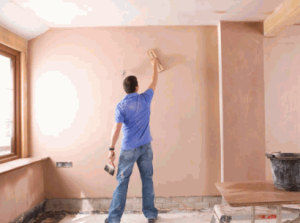
Finishing Touches
The completion of plastering a room involves the final touches, including smoothing and applying the topcoat, ensuring that the surface is impeccably finished and ready for painting or other decorative treatments.
Achieving a flawless, paint-ready surface requires crucial last steps. Smoothing techniques like feathering and sanding ensure an even, imperfection-free plaster surface, creating the perfect canvas for paint or wallpaper. Applying a topcoat adds an extra layer of protection and durability, elevating the overall finish. These finishing touches not only enhance the quality of the plastering work but also contribute to the aesthetics and longevity of the surface.

How Long Does It Take To Plaster A Room?
The time required to plaster a room varies based on factors such as room size, complexity, surface conditions, and the chosen plastering method. Average durations provide valuable insights for project planning and scheduling.
The size of a room is a crucial factor in determining the time needed for plastering. Larger rooms typically require more labor and materials, which can impact the duration of the project. Additionally, complexities such as intricate details or multiple surfaces can also extend the timeline. Surface conditions, such as existing damage or unevenness, may require preparatory work, further affecting the overall timeframe.
The chosen plastering method, whether traditional or modern, can also impact the efficiency and speed of the project. It is important to consider these factors when estimating and managing the timeframes for plastering projects.
Factors That Affect The Time Taken
The time taken for plastering a room is influenced by factors such as the size and layout of the room, the condition of the surfaces, and whether the project involves interior or exterior applications, all impacting the overall project duration.
Room layout plays a crucial role in determining the time required for plastering. Intricate designs or tight corners may demand more time and effort, so it’s important to consider these factors beforehand.
Surface conditions, such as moisture levels and existing damage, can also significantly affect the preparation and application of plaster. Exterior projects may require even more time due to the need for weatherproofing and special primers, unlike interior projects. It’s essential to carefully consider these factors when estimating the time needed for plastering.
Average Time To Plaster A Room
On average, plastering a room may take anywhere from 2 to 5 days, with the duration varying based on the project scope and the expertise of the professionals undertaking the work. This highlights the importance of experienced contractors for efficient completion.
The project scope plays a vital role in determining the time required for plastering. Larger areas or those with intricate details may take longer to complete.
The expertise of the contractors is crucial. Skilled professionals can efficiently address any challenges, ensuring timely completion. Hiring experienced contractors not only expedites the process but also adds value through their knowledge of materials and techniques. This ultimately delivers a superior finish within the estimated timeframe.
Do I Need To Hire A Professional For Plastering A Room?
While DIY plastering is feasible, hiring a professional to plaster a room ensures expert application, precise finishing, and adherence to industry standards. This makes it a prudent choice for quality results, especially in complex or large-scale projects.
Professional contractors possess the technical know-how to handle intricate details and address challenging aspects of plastering projects efficiently. Their expertise minimizes the risk of errors and ensures the smooth, even application of plaster, resulting in a flawless finish.
Professional contractors are equipped with advanced tools and techniques that enable them to work diligently and deliver superior results, enhancing the overall aesthetic appeal of the room. Their systematic approach and quality assurance measures further contribute to the durable and long-lasting outcome of the plastering work.





